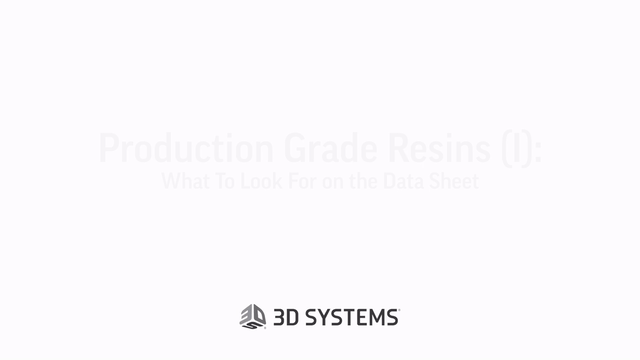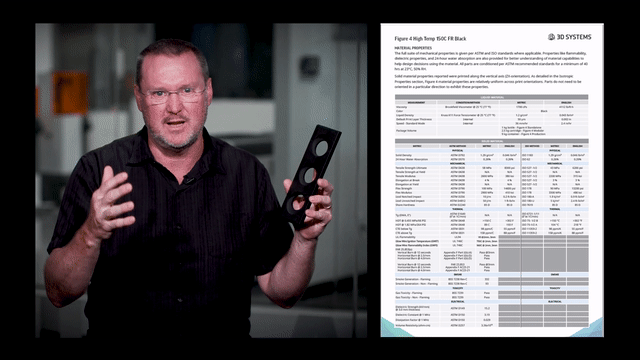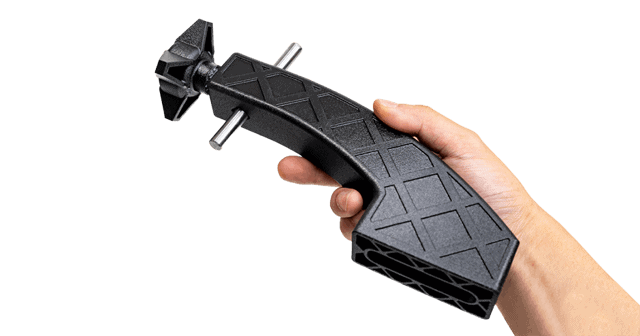3D Systems working on enabling Production Applications by improving long-term mechanical performance of 3D Printed Resins
The value of 3D printing within manufacturing is undisputed. It enables faster development cycles for a shorter time-to-market, reduced product costs and lead-times, greater design flexibility, and countless opportunities to advance final parts and processes. However, 3D printing has spent the majority of its history building its reputation as a prototyping technology – mainly due to the inherent limitations of photopolymer resin technologies. Now, thanks to new developments in photopolymer materials science, its role is expanding with advanced chemistries that deliver long-term mechanical performance to open the door to a host of production capable applications.
In particular, two resin-based additive manufacturing (AM) technologies are evolving: stereolithography (SLA) and projector-based imaging technologies such as 3D Systems’ Figure 4 platform. Both SLA and Figure 4 use ultraviolet (UV) light to cure sequential layers of photoreactive (photopolymer) resin, which is a material type that polymerizes and hardens when exposed to certain wavelengths of light. Where SLA uses a UV laser to draw each layer point-by-point, Figure 4 uses a digital light source to project images layer-by-layer. For this reason, along with differences in platform size, SLA has long been considered the champion of high accuracy and large format printing, whereas Figure 4 is generally favored for scalable, higher volume printing.
The Challenges of Photopolymer Resins
The photopolymers materials used by these technologies are thermoset plastics, and are often described with reference to their closest engineering thermoplastics equivalent, such as polypropylene (PP), acrylonitrile butadiene styrene (ABS), and polycarbonate (PC). These thermoplastics polymers are used frequently in machined, cast, and injection-molded parts, which is why 3D printing photopolymers are generally formulated to replicate their properties. Compared to more conventional polymers, photopolymers provide a versatile, cost-effective path to a wide range of applications from prototypes and low-volume jigs and fixtures to investment casting patterns.
The challenge of using 3D printing photopolymers for long-term applications hinges on how photopolymer parts are created. Because photopolymer resins are cured with exposure to UV light, exposure to additional UV light – namely, sunlight – has historically been problematic, causing issues such as discoloration and/or loss of mechanical properties quickly over time. Although other 3D printing technologies avoid these problems by using different methodologies and material chemistries, the accuracy advantages of Figure 4 and SLA have kept 3D Systems’ chemists determined to find a breakthrough. Their efforts have been rewarded, and they have revolutionized photopolymer material capabilities to open the door to true production-ready polymers for additive manufacturing.

Developing AM Materials for Long-Term Use
Evaluating these new materials has taken time and thorough measurement. To evaluate outdoor stability, for example, 3D Systems measured natural outdoor weathering over months and years, as well as performed industry-standardized accelerated weathering in accordance with multiple ASTM and ISO standards. This allowed the company to generate both natural and accelerated aging curves to develop an acceleration factor that it could apply to new chemistries and routinely validate through comparison to natural weathering.
Figure 4® TOUGH-BLK 20 was the first photopolymer introduced by 3D Systems to offer long-term mechanical and color stability measured beyond 18 months’ outdoor exposure. It was formulated with the company’s patented UV-stability technology and has since been joined by several other production-ready AM materials. These materials demonstrate the ability to retain mechanical properties such as tensile strength and modulus, elongation at break, and notched impact strength, which is critical to assessing their suitability for any given application.

Making Informed Decisions About Material Capability
To support the need of product designers and manufacturers for thorough information, all of 3D Systems’ production-grade materials have technical datasheets that provide a consistent display of properties, including information on long-term environmental stability. This documentation also includes information about the material’s chemical resistance to industrial detergents and automotive fluids, biocompatibility and mechanical properties after sterilization, thermal resistance, and isotropic properties as relevant. 3D Systems makes this information easy to find so materials can be properly evaluated for any given application.
Knowing that a product will retain its color and mechanical performance for years is important to any manufacturer, and resin-based AM materials can now provide these assurances. Longer-lasting parts through these material advancements also mean a better shelf life and fewer warranty complaints, while the higher production speed and high accuracy of these technologies opens the door to lower manufacturing costs and a host of applications once dominated by plastic injection molding.


